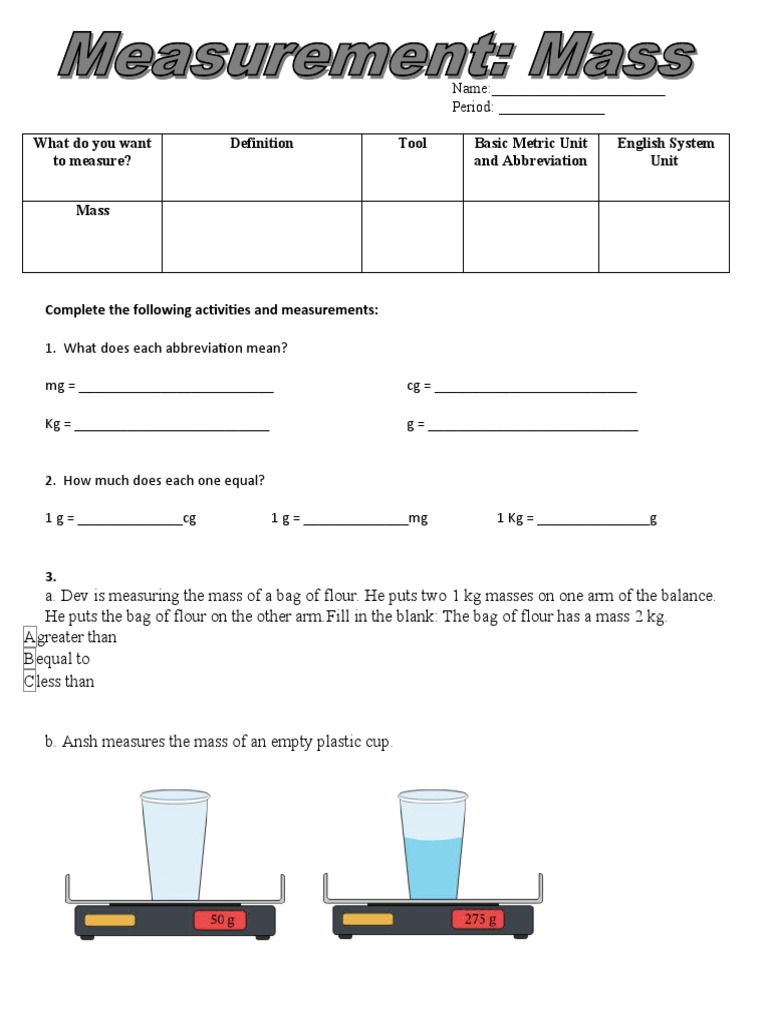The measurement of mass is a fundamental aspect of both scientific inquiry and practical applications across various fields, from chemistry to engineering. In the realm of the metric system, several instruments are employed to ascertain mass, each with its own unique features and applications. Understanding these instruments not only enhances one’s knowledge of metric mass measurement but also provides insight into their respective efficiencies, accuracy, and appropriate contexts for utilization.
One of the most ubiquitous instruments in measurements of mass is the balance scale, with the analytical balance being particularly noteworthy. Designed for precision, analytical balances are capable of measuring mass to an extremely high degree of accuracy, often to the milligram or even microgram level. These devices feature a sensitive mechanism, often utilizing electromagnetic forces to counterbalance the weight of an object placed upon them. The environment surrounding the balance—such as temperature, air currents, and even vibrations—must be rigorously controlled to ensure precision. These characteristics make analytical balances indispensable in laboratory settings where exact measurements are crucial, such as in pharmaceuticals and biochemical research.
In contrast, beam balances operate on a different principle, relying on a system of lever arms and weights to ascertain mass. The user places the object on one side of the beam, while calibrated weights are added to the other side until equilibrium is achieved. Beam balances are renowned for their simplicity and robustness, yet they offer sufficient accuracy for many applications, often in educational settings and industrial processes. Furthermore, these balances can be employed to compare the mass of objects rather than providing a direct reading, fostering a deeper conceptual understanding of mass and weight-related principles.
Moving on to digital scales, these instruments have become increasingly dominant in everyday use due to their convenience and ease of use. Employing load cells—devices that convert force into electrical signals—digital scales provide a rapid and user-friendly means of measuring mass. The electronic display offers instantaneous readouts, making them practical for a range of applications, from grocery shopping to classroom activities. However, it is imperative to consider that while digital scales typically offer reasonable accuracy, their precision may be lower than that of more sophisticated devices like analytical balances. Consequently, understanding the specifications and limitations of digital scales is essential for users mindful of measurement accuracy.
Another category of instruments employed for mass measurement is the spring scale. This device uses Hooke’s Law, which states that the force exerted by a spring is directly proportional to its extension or compression. Users hang an object from the spring, and as the weight pulls on the spring, it elongates, with the degree of elongation being used to calculate the mass. While spring scales can offer a good approximation of mass, they are best suited for applications where high precision is not paramount. Their mobility and simplicity make them popular in educational settings, particularly for teaching the principles of gravity and force.
In the realm of specialized applications, force sensors and load cells offer sophisticated means to measure mass indirectly through force measurements. These instruments are pivotal in automation and process control within various industries, including manufacturing and logistics. Force sensors can be used in integrated systems, providing real-time mass data as part of complicated processes. Although typically more costly than simpler alternatives like beam or spring scales, their ability to be integrated into broader systems justifies their use in high-stakes environments.
Moreover, the concept of mass measurement is also relevant in the domain of scientific research, particularly when delving into subatomic particles and astrophysical entities. In such cases, advanced instruments, such as Mass Spectrometers, are utilized. These devices measure the mass of ions in a sample by sorting them based on their mass-to-charge ratio. This sophisticated measurement is crucial for applications ranging from determining molecular structures to identifying isotopes and analyzing complex mixtures. Mass spectrometry represents the convergence of mass measurement with other scientific disciplines like chemistry and physics, underscoring its vital role in cutting-edge research.
The metric system’s emphasis on coherence and universal applicability is essential in understanding the instruments utilized for mass measurement. The kilogram (kg) serves as the base unit of mass within this system, and the instruments mentioned—balancing scales, digital scales, spring scales, force sensors, and mass spectrometers—play unique roles in diverse applications. Each instrument has been tailored to meet specific needs, from everyday usage to specialized scientific research, demonstrating the breadth of tools available for mass measurement.
In conclusion, mass measurement in the metric system involves a plethora of instruments, each boasting its own strengths and weaknesses. From the precision offered by analytical balances to the accessibility of digital scales, users must consider the context and requirements of their measurement tasks. As we continue to expand our technological capabilities, the importance of understanding these measurement instruments will undeniably influence both scientific and everyday applications. The knowledge surrounding mass measurement tools reinforces the fundamental principles of physics while pushing the boundaries of what can be achieved through technology and innovation.










